Transmission electron microscopy (TEM) is a powerful technique for visualizing structure at nanometer or Angstrom resolution. However, TEM performance lags considerably behind its theoretical limit based on the physics of electron scattering, especially in cases requiring low-dose imaging. Multiple factors reduce the resolution and signal-to-noise ratio (SNR) of TEM images, including the microscope instrumentation, dynamic specimen processes (e.g., drift, beam-induced motion, charging, radiation damage, etc.), and inefficient electron detectors.
With the goal of overcoming many of these obstacles, Direct Electron introduced the first large-format Direct Detection Device (DDD®) in 2008, as the culmination of academic and industrial partnerships working through many generations of sensor development beginning in 2001. As the pioneer in direct electron detection, our revolutionary DDD sensors were recognized with the 2010 Microscopy Today Innovation Award.
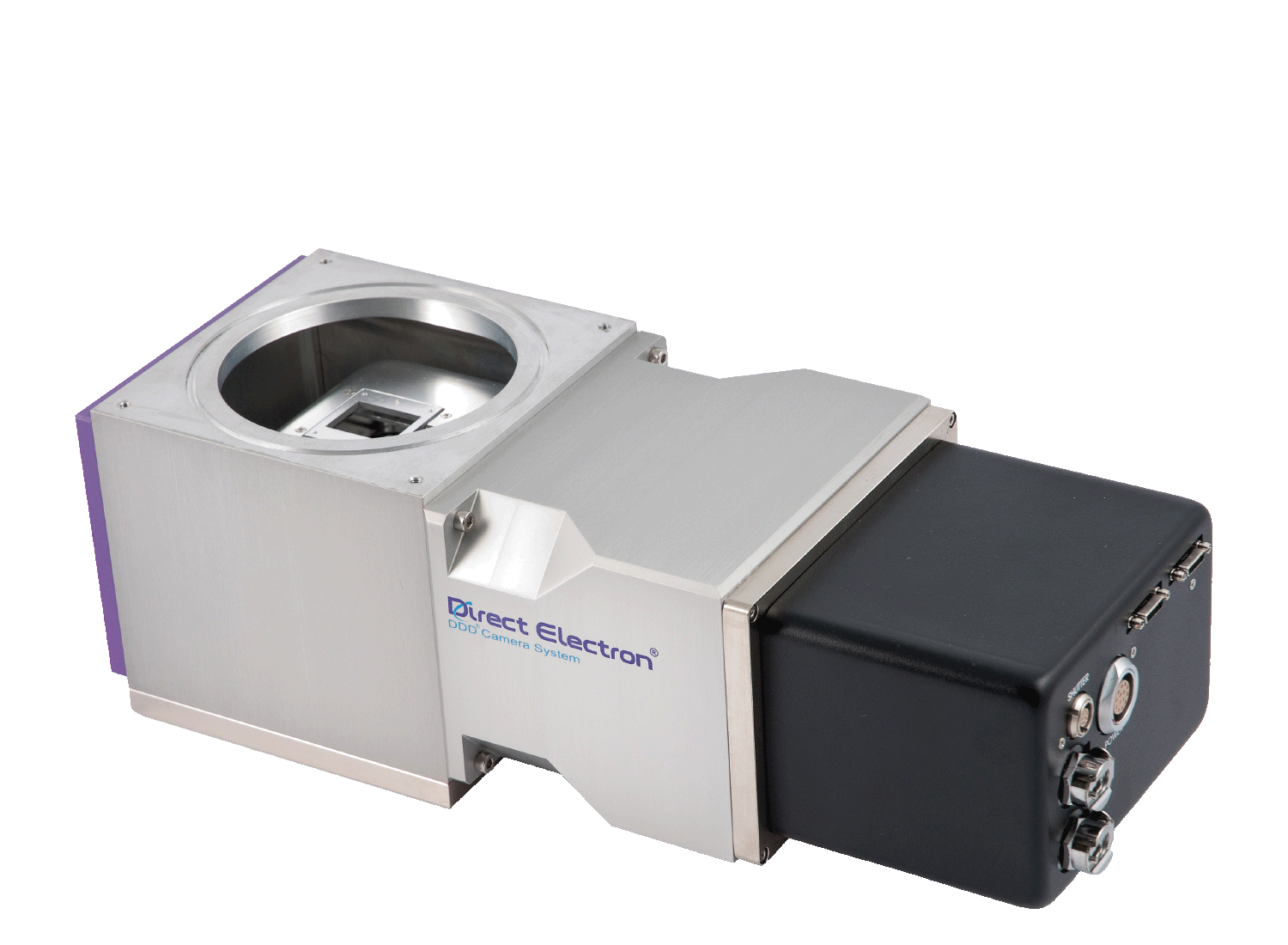
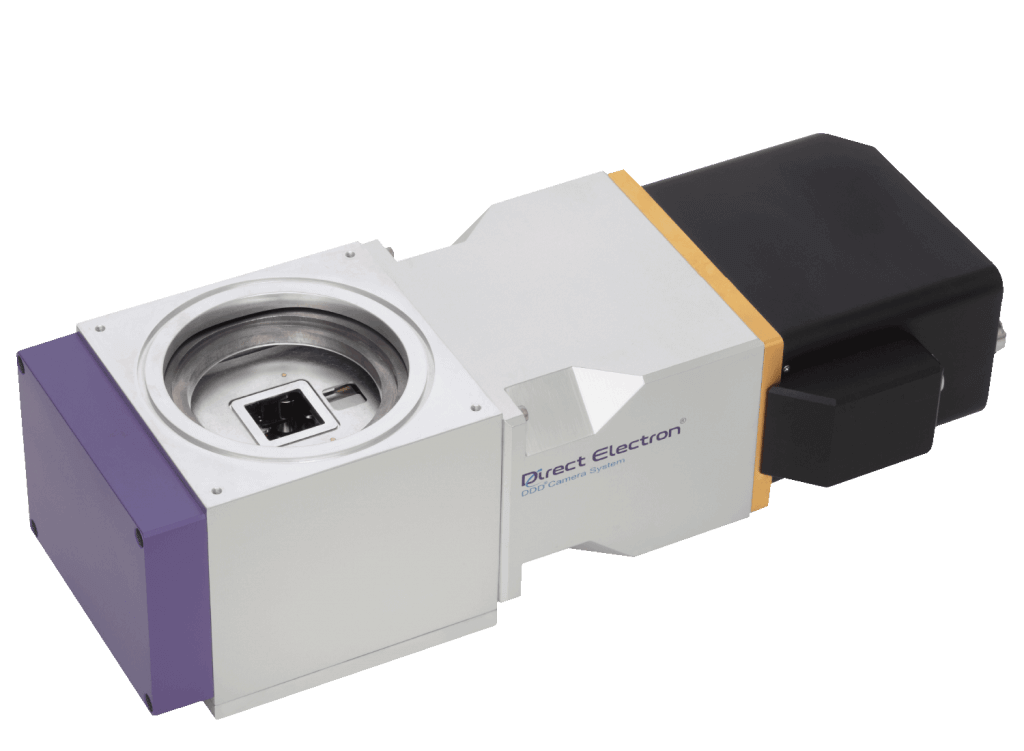
The DE-16 features 6.5 μm pixels optimized for superior resolution (MTF) over a broad range of magnifications and exposure rates and boasts a 4k x 4k field-of-view
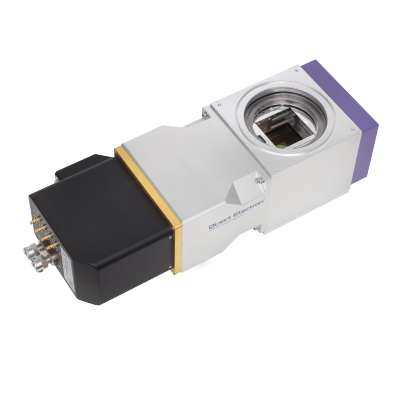
The DE-64 is the world’s first and only true 8k × 8k direct detector with the widest field of view of any direct detector. Ideal for cryo-EM of very large viruses or cellular tomography.
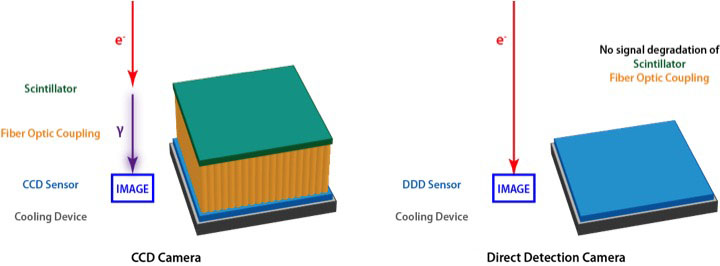
The secret to the DDD’s high performance is its thin sensing layer. Incident beam electrons pass through this thin layer leaving an ionization trail that is collected and either integrated or counted in pixels. Because the layer is so thin, lateral charge spread is minimized resulting in higher resolution than other detectors. Furthermore, image distortions are minimized since the DDD directly detects electrons without having to transfer signal through fiber-optic or optical lenses.
A second innovative feature of the DDD is its high frame rate, with no dead time between frames. This high frame rate delivers intrinsic dose fractionation during image acquisition, which can be exploited for motion correction, damage compensation, and other image processing techniques. High frame rate data acquisition also enables challenging TEM applications such as in situ TEM

Modulation transfer function (MTF) is one of the most widely used scientific methods for describing optical performance. MTF measures the contrast across all spatial frequencies. Direct Electron’s cameras have incredibly high resolution and contrast at or near the theoretical maximum even as spatial frequency increases.
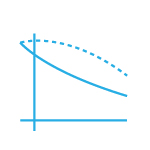
For TEM cameras, the DQE measures the combined effects of the signal and noise performance of a detector. The DQE curve can be thought of as resolution on the X-axis and relative signal-to-noise on the Y-axis, with higher results being positive. The DE-Series shows low noise and high resolution near the theoretical maximum for both counting and integrating modes as the spatial frequency increases.

The exceptional high-resolution performance of our DE-Series cameras means the camera is no longer the primary limiting factor for TEM resolution. Our DE-20 shows very high resolution bright-field TEM imaging, with Thon rings out to 2.3 Angstroms resolution (92% Nyquist).
Dive deeper with a carefully curated list of journal articles! Search by Application, Technique, Impact and more!